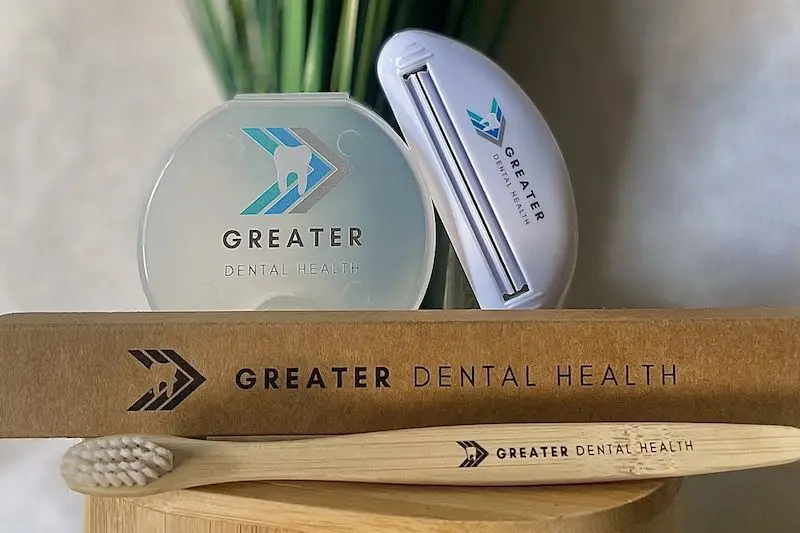Post-Operative Instructions for Dental Fillings
Thank you for choosing Greater Dental Health for your dental filling treatment. A dental filling is a common procedure used to treat cavities and restore the natural function and shape of your teeth. While recovery after a dental filling is typically quick and straightforward, following the post-operative instructions is essential to ensure proper healing and the longevity of your filling. Below are the recommended guidelines to follow after your dental filling procedure.
Managing Discomfort and Pain
It’s normal to experience mild discomfort or sensitivity after having a dental filling, particularly if the cavity was deep or near the nerve of the tooth. Sensitivity to hot or cold temperatures is also common in the first few days following the procedure.
- Pain Relief: Over-the-counter pain relievers such as ibuprofen (Advil) or acetaminophen (Tylenol) can be taken as directed to relieve any discomfort. If you have concerns about pain or if discomfort worsens, please contact our office.
- Sensitivity: Sensitivity to temperature and pressure may last for a few days following the procedure, but this typically resolves on its own. If the sensitivity persists for more than a week, or if you experience severe pain, please reach out to our office for further evaluation.
Avoiding Certain Foods and Beverages
While your filling is settling into place, it’s important to avoid certain foods and drinks that could cause discomfort or affect the filling.
- Soft Foods: If your filling is a composite or white filling, avoid hard, crunchy, or sticky foods for the first 24-48 hours after the procedure. This will help prevent any discomfort and ensure the filling adheres properly to your tooth.
- Avoid Hot/Cold Foods and Drinks: If you are experiencing tooth sensitivity, it may be helpful to avoid extremely hot or cold beverages and foods for a few days. This can help prevent unnecessary discomfort.
- Chewing: If you have a filling placed in a tooth that you use to chew, avoid chewing on that side for at least 24 hours. This will allow the filling to set and prevent unnecessary pressure on the tooth.
Oral Hygiene
Maintaining good oral hygiene after your dental filling is essential for preventing further decay and ensuring the longevity of the filling.
- Brushing: You can resume brushing your teeth the day after the procedure. Be sure to use a soft-bristled toothbrush and brush gently around the filled area to avoid irritating the gums or dislodging the filling.
- Flossing: It’s important to resume flossing gently around the filled tooth. Be cautious not to snap the floss around the filling. Avoid using excessive force, as this could cause the filling to dislodge. It may take a few days for your filling to fully settle into place.
- Mouthwash: You may use mouthwash as usual, but avoid vigorous rinsing for the first 24 hours after your filling. A gentle rinse with warm salt water can help reduce any gum irritation around the treated area.
Numbing and Sensitivity
If local anesthesia was used during your filling procedure, you may experience numbness in the treated area for several hours following the treatment. To avoid injury, do not chew or bite down on your numb mouth, as you may accidentally bite your cheek, tongue, or lip.
- Wait for Numbness to Wear Off: Be mindful of the numbness, especially if you have small children or pets, as biting the tongue or cheek may occur unintentionally. Wait until the numbness completely subsides before eating or drinking.
- Post-Treatment Sensitivity: If the filled area feels sensitive to touch or pressure when you bite down, this is normal and should subside after a few days. If you notice increased sensitivity or pain while chewing, please contact our office.
Temporary Fillings
If you received a temporary filling, it is essential to avoid eating sticky or hard foods, as this could cause the filling to become dislodged. If the temporary filling does come out, please contact our office immediately to schedule a replacement.
For permanent fillings, such as composite or amalgam, avoid chewing on the treated tooth for 24 hours. This will allow the filling to fully harden and integrate with the tooth structure.
Activities to Avoid
Following the procedure, there are a few activities you should avoid to ensure proper healing of the filled tooth and prevent complications.
- Avoid Smoking: Smoking can impair the healing process and lead to complications. We recommend avoiding tobacco products for at least 48 hours after your filling.
- Limit Hard Chewing: If the filling was placed on a molar or any tooth you use for chewing, avoid hard foods like nuts, ice, or raw vegetables for the first few days to prevent any unnecessary stress on the filling.
- Avoid Using Your Teeth as Tools: Avoid using your filled tooth to open packaging or bite down on hard objects like pens. This can cause damage to the filling or even crack the tooth.
When to Call the Office
While discomfort and sensitivity are common after a dental filling, there are certain signs that could indicate a problem with your filling or the healing process.
Contact our office if you experience any of the following:
- Severe or persistent pain in the treated tooth that does not subside with over-the-counter pain medication.
- The filling feels loose or falls out completely.
- You notice a sharp edge or rough spot on the filling.
- There is visible swelling or an abscess (pus) around the filling site, which may indicate an infection.
- You experience excessive sensitivity to hot or cold foods and drinks that don’t improve after a few days.
Long-Term Care of Fillings
Once your filling has fully healed, it’s important to maintain regular dental visits and continue good oral hygiene practices to ensure the longevity of the filling and prevent future cavities.
- Regular Checkups: It is essential to attend your routine dental exams and cleanings. We will monitor the condition of your filling during these visits and check for any signs of decay around the filling.
- Proper Brushing and Flossing: Continue to brush your teeth at least twice a day and floss daily to prevent plaque buildup around the filled tooth. This will help keep the tooth and surrounding gums healthy and protect your filling from premature wear.
Conclusion
Your dental filling is an essential part of maintaining your oral health and restoring the function of your tooth. By following these post-operative instructions, you can ensure a smooth recovery and maximize the longevity of your filling. If you have any questions or concerns, please don’t hesitate to contact our office at Greater Dental Health. We’re here to support your dental health every step of the way!



